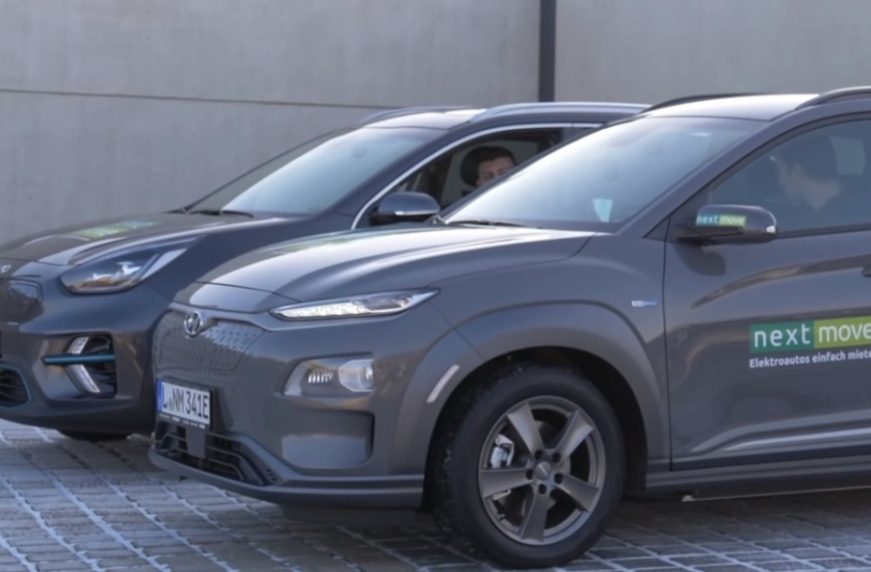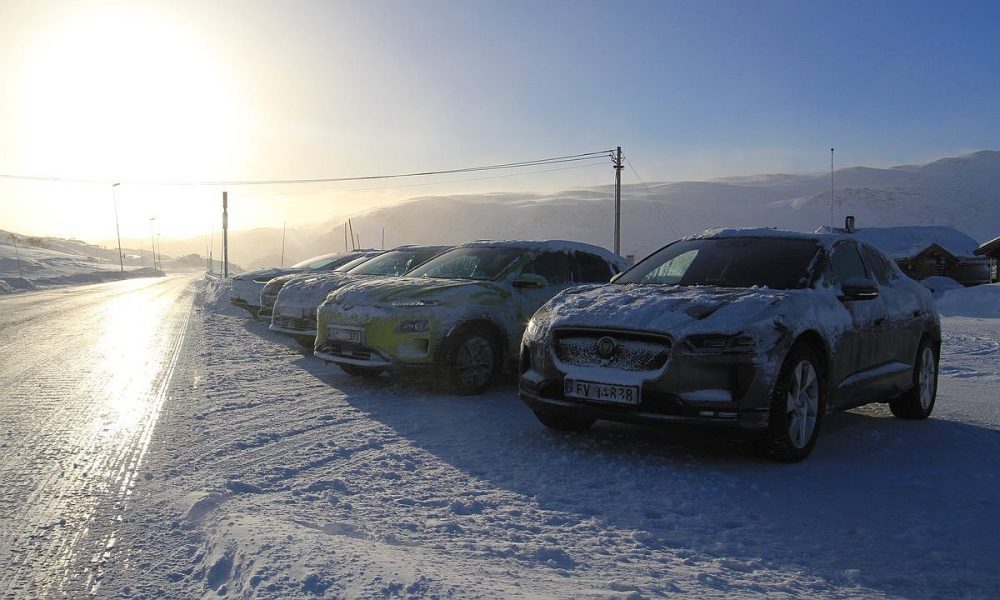
TEST: Kia e-Niro vs. Hyundai Kona Electric PLUS Jaguar I-Pace vs. Audi e-tron vs. Tesla Model X
Content
The Norwegian Electric Vehicle Association has tested five electricians in harsh winter conditions in the north of our continent. This time, crossovers / SUVs were taken to the service station: Hyundai Kona Electric, Kia e-Niro, Jaguar I-Pace, Audi e-tron and Tesla Model X 100D. The winners were ... all cars.
A year ago, the association dealt with typical B and C class passenger cars, i.e. BMW i3, Opel Ampera-e and Volkswagen e-Golf, Nissan Leaf and Hyundai Ioniq Electric. The Opel Ampera-e performed the best in the range test thanks to the largest battery ever.
> Electric cars in winter: the best line - Opel Ampera E, the most economical - Hyundai Ioniq Electric
In this year's experiment Only crossovers and SUVs from almost the entire spectrum of classes participated:
- Hyundai Kona Electric - class B SUV, 64 kWh battery, real range in good conditions is 415 km (EPA),
- Kia e-Niro - C-SUV class, 64 kWh battery, 384 km actual range in good conditions (preliminary declarations),
- Jaguar I-Pace - class D-SUV, 90 kWh battery, real range in good conditions 377 km (EPA),
- Audi e-tron - class D-SUV, battery 95 kWh, actual range in good conditions about 330-400 km (preliminary declarations),
- Tesla Model X 100D - E-SUV class, 100 kWh battery, real range in good conditions is 475 km (EPA).
Energy consumption, measured at a distance of 834 km, showed that in winter, cars would be able to cover on a single charge:
- Tesla Model X - 450 km (-5,3 percent of EPA measurements),
- Hyundai Kona Electric - 415 km (unchanged),
- Kia e-Niro-400 km (+4,2 percent),
- Jaguar I-Pace - 370 km (-1,9 percent),
- Audi e-tron - 365 km (average -1,4 percent).
The numbers make you think: if the values were practically the same as those declared by the manufacturers, the driving style of the Norwegians had to be very economical, with low average speeds, and the conditions during the measurements were favorable. The short test video actually has a lot of shots in the sun (when the cabin needs to be cooled down, not warmed up), but also a lot of snow and twilight recordings.
Audi e-tron: comfortable, premium, but "normal" electric car
The Audi e-tron has been described as a premium car, comfortable to travel and the quietest on the inside. However, it gave the impression of a "normal" car, into which an electric drive was inserted (of course, after removing the internal combustion engine). As a result energy consumption was high (based on: 23,3 kWh / 100 km).
The assumptions of other tests were also confirmed: although the manufacturer claims that the battery has 95 kWh, its usable capacity is only 85 kWh. This large buffer allows you to achieve the fastest charging speeds on the market without visible cell degradation.
> Electric vehicles with maximum charging power [RATING February 2019]
Kia e-Niro: the practical favorite
The electric Kia Niro quickly became a favorite. Little energy is consumed while driving (from calculations: 16 kWh / 100 km), which gives very good results on a single charge. It lacked only four-wheel drive and the ability to tow trailers, but it did offer plenty of room even for adults and a familiar menu.
The Kia e-Niro battery has a total capacity of 67,1 kWh, of which 64 kWh is usable capacity.
Jaguar I-Pace: predatory, attractive
The Jaguar I-Pace not only created a sense of safety, but also a pleasure to drive. He was the best of five in the last assignment, and his appearance attracted attention. Of the 90 kWh declared by the manufacturer (actually: 90,2 kWh), the useful power is 84,7 kWh, and the average energy consumption is 22,3 kWh / 100 km.

Hyundai Kona Electric: comfortable, economical
The Hyundai Kona Electric felt simple, driver-friendly yet well-equipped. The ride was fun, despite the minor flaws. Both Hyundai and Kia are expected to be equipped with remote control apps soon.
The Hyundai Kona Electric battery has a total capacity of 67,1 kWh, of which 64 kWh is usable capacity. Exactly the same as in e-Niro. The average energy consumption was 15,4 kWh/100 km.
Tesla Model X 100D: the benchmark
Tesla Model X was taken as a model for other cars. The American car has an excellent range, and on the road it performed better than all the models on the list. It was louder than its premium rivals, however, and build quality was considered weaker than Jaguar and Audi.
The battery capacity was 102,4 kWh, of which 98,5 kWh was used. The estimated average energy consumption is 21,9 kWh / 100 km.
> Dealers in the United States have two BIG problems. The first is called "Tesla", the second - "Model 3".
Summary: no machine is wrong
The association did not choose a single winner - and this is not surprising, because the spectrum was so wide. We were under the impression that the Kia e-Niro is the best valued in the economy variant, while the Tesla is the most enticing in the premium variant. However, it should be added that with real ranges of 300-400 (and more!) Kilometers almost every proven electrician can replace an internal combustion car... Moreover, they all support charging with a capacity of more than 50 kW, which means that on any day on the road they can be charged 1,5-3 times faster than now.
Of course, this is not the case for Tesla, which already reaches full charging power with the Supercharger (and up to 50kW with the Chademo).

Check out: elbil.no
Note from the editors of www.elektrowoz.pl: The energy consumption indicated by us is the average value obtained by dividing the usable battery capacity by the calculated distance. The association provided consumption ranges.
This may interest you:

